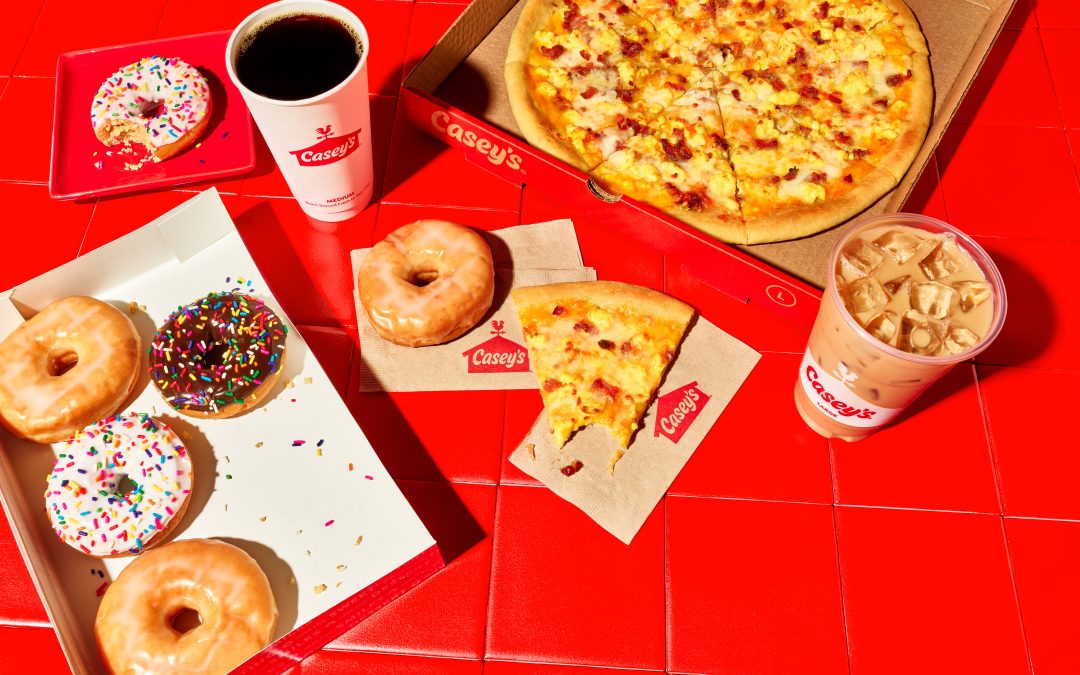For consumers of a certain age, grabbing a hot dog off a roller grill from a convenience store was what you did at 2 a.m. when everything else was closed. And you would probably regret it.
But this isn’t 1996.
Today, C-Stores offer menu items that are fresh and affordable and consumers are gobbling them in record numbers.
In 2023, foodservice sales accounted for 27 percent of the industry’s in-store sales, up 1.3 percent from the year before, for an estimate of $88 billion, according to data from the National Association of Convenience Stores (NACS). And when the NACS computed for margins, the results were eye-popping: foodservice accounted for 37.3 percent of total store profits.
And the trend line may get even more vertical. Ninety-three percent of consumers have reported trying a made-to-order food item from a C-Store, up from 76 percent in 2022, according to a Convenience Store Trends Report.
What in the world are C-Stores doing so well?
The Casey’s pizza phenomenon
Casey’s is known for pizza. Anyone who has ever driven through the Midwest knows that. It is available in nearly 2,500 locations in 16 states and also for delivery.
It’s easy to see why it’s so popular. It’s affordable. A large cheese pizza costs $13.99; the nationwide average is $18.33, according to a 2024 study from Slice. It’s tasty. Scores of satisfied customers can attest to that. And it’s accessible. For consumers in those 16 states, there’s often a Casey’s just a block over, and stores stay open late. Casey’s does so well with pizza that it’s the fifth-largest pizza chain in the country.
But Casey’s is more than pepperoni. The chain has broadened its hot-food offerings to include wings, wraps, burgers, and more, all the biggies for the grab-and-go or deliver-to-my-house crowds.
During the past two fiscal years, sales of prepared foods at Casey’s have increased 14 percent. Casey’s is exploiting this success by introducing new items, like thin-crust pizza, which it started selling in 2023, and chicken sandwiches. Its proposition is still predicated on affordability and convenience. But with enhanced quality.
“Based on guest insights, we knew we had room to improve our sandwich offerings. We focused on upgrading the ingredients to provide higher-quality sandwich options, including our recent entry into crispy and spicy chicken sandwiches, which has significantly increased our prepared food sales over the last quarter,” said Brad Haga, senior vice president of prepared food and dispensed beverages at Casey’s. “We’re also offering a limited-time offer barbecue pulled pork pizza and other exclusive products. We want to be a differentiated destination.”
Fried chicken at Kwik Trip
But it’s not just large chains like Casey’s, which is the third-largest convenience-store retailer in the country, that are thriving. Smaller outlets like Kwik Trip, which is the 11th-largest chain, with 873 stores in Iowa, Minnesota, and Wisconsin, are also growing, with food being the accelerator.
Kwik Trip places its food and beverage centers at the front of its stores. There you can pick up a sausage egg croissant, or if it’s later in the day broccoli cheese soup or fried chicken, which it recently added.
“We haven’t been afraid to try new things,” said Ben Leibl, a public relations specialist at Kwik Trip. “We recently added pepper jack cheese to four new sandwiches and that has been a hit as well.”
Kwik Trip brought in $1.2 billion in food sales in its fiscal year that ended in 2023, according to Convenience Store News.
And like Casey’s, which recently announced it is on pace to build 350 more stores by the end of fiscal year 2026, Kwik Trip is deepening its footprint. It has announced that it is investing $151 million to expand operations in its Wisconsin stores.
As one might assume post-pandemic, delivery and rewards are big parts of the equation. Both Casey’s and Kwik Trips offer sophisticated points programs for ordering through their apps. And both use third-party delivery partners for at least part of their fulfillment. Casey’s can be found on DoorDash and Uber Eats; Kwik Trips is there and on Grubhub.
And let’s not overlook 7-Eleven. It’s the largest C-Store chain and it has created its own delivery ecosystem with its 7NOW app. Through it, consumers can order a number of hot-food items, from mini-tacos to nachos, and have them delivered in 30 minutes, 24-7. The app isn’t available everywhere but is in 45 major cities. On its last earnings call the company said one of its goals is to drive fresh food.
This should come as no surprise

Anne-Marie Roerink
While C-Stores have always been lurking as a budget niche in the restaurant world, they are having a moment now due in part to inflation, said Anne-Marie Roerink, a principal at 210 Analytics, a market-research firm.
“We are in a time of pocketbook pressure and people need to pull off a non-stop balancing act,” she said. “C-Stores have done a good job leveraging that morning coffee moment. Now people are thinking, well, why don’t I pick up lunch for later? It’s helpful that they have a fairly cheap model.”
The pandemic certainly shifted things around. More than ever, consumers now see the variety of menu offerings at convenience stores to be, well, convenient.
“During Covid the technology of ordering online and delivery accelerated. With C-Stores, you can now order pizza, a bag of chips, maybe some beers, maybe some soda, maybe a bottle of wine. All of sudden you can source your entire Friday night at a C-Store and it can be delivered,” Roerink said. “It’s not like the old days where C-Stores were thought of mostly for Cokes and smokes.”
C-Stores have also been savvy about keeping labor costs down and deploying technology.
“Most convenience stores are fairly small,” said Roerink. “They don’t have a lot of staff; it’s mostly self-serve. And even if you look at stores with big sandwich programs, like Wawa with its hoagies, all the ordering takes place with kiosks. You go up, you decide what size bread, what type bread, what you want on it, toasted, not toasted. The whole ordering process is labor free.”
Most operators are familiar with the need to deliver on service, price and loyalty. But now C-Stores, which have long been considered the goofy cousin sitting at the kid’s table, are a prime competitor? Where is the battle that can still be won?
“Taste. Price in combination with taste,” Roerink said. “If you try something and it doesn’t taste good, consumers aren’t going to try it again.”


